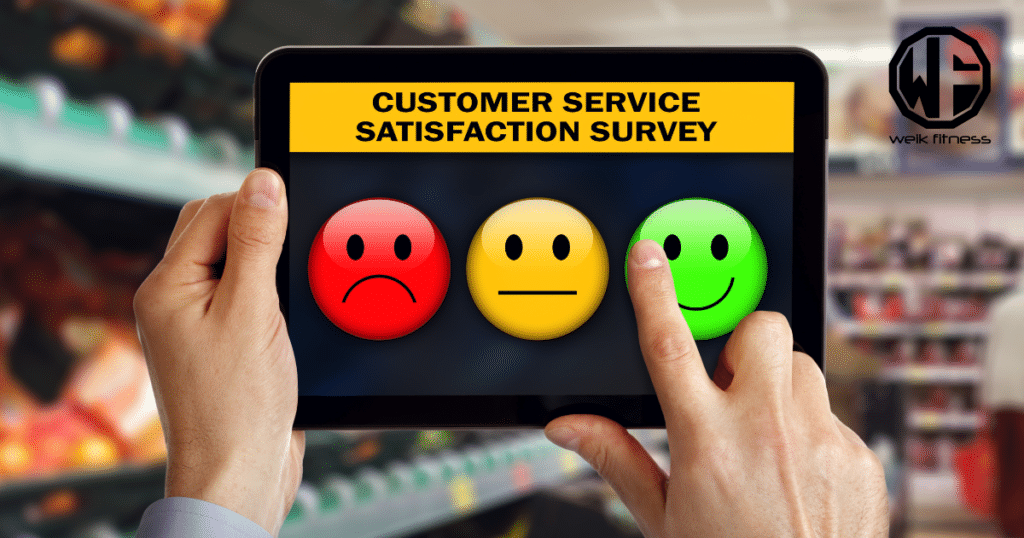Consumer Surveys: If You Aren’t Asking, You’re Going to Lose
What are people saying about your brand? Does your brand cater to their needs? What demographic is actually buying your products and using them and more importantly, WHY are they using them? If you are a supplement brand and you aren’t using consumer surveys whether it be online or at the retail level to gain insight, you’re going to lose.
Table of contents

What Are Consumer Surveys?
Consumer surveys are a research method used to gather information from consumers about their preferences, experiences, and behaviors regarding products or services. These surveys are designed to collect feedback directly from the target audience, which can be used to inform business decisions, improve products or services, and enhance customer satisfaction. Here are key aspects of consumer surveys:
- Purpose:
- Market Research: Understanding market trends, consumer preferences, and demand for products or services.
- Product Development: Gathering insights on features, design, and functionality to develop or improve products.
- Customer Satisfaction: Measuring how satisfied customers are with a product or service to identify areas for improvement.
- Brand Perception: Assessing how consumers perceive a brand and its reputation in the market.
- Types of Consumer Surveys:
- Questionnaires: Structured sets of questions delivered in various formats (online, paper, phone, in-person).
- Interviews: More in-depth and personalized interactions, usually conducted one-on-one.
- Focus Groups: Group discussions facilitated to gain insights from multiple consumers simultaneously.
- Online Surveys: Digital questionnaires distributed through email, websites, or social media platforms.
- Components of a Survey:
- Questions: Open-ended, closed-ended, multiple choice, rating scales, and Likert scales.
- Demographic Information: Collecting data on age, gender, income, education, etc., to analyze trends among different consumer groups.
- Response Options: Varied formats to capture detailed or specific feedback (e.g., text boxes, checkboxes, sliders).
- Methodology:
- Sampling: Selecting a representative group of consumers to participate in the survey.
- Distribution: Choosing the most effective channels to reach the target audience (e.g., email, social media, phone).
- Data Collection: Gathering responses in a systematic manner to ensure accuracy and reliability.
- Data Analysis:
- Quantitative Analysis: Statistical techniques to analyze numerical data, such as averages, percentages, and correlations.
- Qualitative Analysis: Interpreting open-ended responses to identify themes, patterns, and insights.
- Benefits:
- Actionable Insights: Providing businesses with data-driven insights to make informed decisions.
- Customer Engagement: Demonstrating to consumers that their opinions matter and are valued.
- Competitive Advantage: Gaining a better understanding of market needs and staying ahead of competitors.
- Challenges:
- Survey Design: Crafting questions that are clear, unbiased, and relevant.
- Response Rates: Encouraging a sufficient number of participants to ensure data reliability.
- Data Interpretation: Analyzing data accurately and objectively to draw meaningful conclusions.
Consumer surveys are a vital tool for businesses seeking to understand their customers and improve their offerings. By effectively designing and executing these surveys, companies can gather valuable feedback that drives growth and customer satisfaction.
How Do You Use Consumer Surveys?

Using consumer surveys effectively involves several key steps, from designing the survey to analyzing the data and implementing insights. Here’s a comprehensive guide on how to use consumer surveys:
1. Define Objectives
- Identify Purpose: Clearly define what you want to achieve with the survey (e.g., product feedback, customer satisfaction, market trends).
- Set Goals: Establish specific, measurable goals that you aim to accomplish through the survey.
2. Design the Survey
- Question Types: Use a mix of question types (e.g., multiple choice, Likert scale, open-ended) to gather a range of data.
- Question Clarity: Ensure questions are clear, concise, and free of bias to avoid misleading responses.
- Logical Flow: Arrange questions in a logical order that makes sense to respondents and encourages completion.
- Length: Keep the survey as short as possible while collecting the necessary information to avoid respondent fatigue.
3. Select the Sample
- Target Audience: Identify the specific group of consumers you want to survey (e.g., current customers, potential customers, specific demographics).
- Sampling Method: Choose a sampling method (random, stratified, convenience) that best suits your research goals and ensures a representative sample.
4. Distribute the Survey
- Channels: Decide on the distribution method (e.g., online surveys, email, phone, in-person) that will effectively reach your target audience.
- Timing: Consider the best time to distribute the survey to maximize response rates (e.g., avoiding holidays, weekends).
- Incentives: Offer incentives (e.g., discounts, gift cards) to encourage participation.

5. Collect Data
- Monitor Responses: Keep track of response rates and follow up if necessary to ensure a sufficient number of responses.
- Ensure Anonymity: If applicable, assure respondents that their answers will remain confidential to encourage honest feedback.
6. Analyze Data
- Quantitative Analysis: Use statistical methods to analyze numerical data, such as calculating averages, frequencies, and correlations.
- Qualitative Analysis: Examine open-ended responses to identify common themes, sentiments, and insights.
- Cross-Tabulation: Compare responses across different demographic groups to uncover specific trends and preferences.
7. Interpret Results
- Identify Key Findings: Summarize the main insights and patterns from the data.
- Contextualize: Place findings in the context of your business goals and market environment.
- Highlight Actionable Insights: Focus on insights that can directly inform business decisions and strategies.
8. Implement Changes
- Develop Action Plans: Based on survey insights, create action plans to address identified issues or capitalize on opportunities.
- Communicate Findings: Share the results and action plans with relevant stakeholders within the organization.
- Monitor Impact: Track the impact of changes implemented as a result of survey findings to assess effectiveness.
9. Follow Up
- Continuous Improvement: Use surveys as part of an ongoing feedback loop to continually gather consumer insights and improve offerings.
- Communicate with Respondents: If appropriate, share key findings and any resulting changes with survey participants to show that their feedback is valued and acted upon.
Example Use Cases
- Product Development: A company can use surveys to gather feedback on a new product concept, refining features based on consumer input before the product launch.
- Customer Satisfaction: Regular surveys can measure customer satisfaction with services, identifying areas for improvement to enhance the overall customer experience.
- Brand Perception: Surveys can help gauge consumer perception of a brand, providing insights for marketing strategies to strengthen brand image.
By following these steps, businesses can effectively use consumer surveys to gather valuable insights, make informed decisions, and improve customer satisfaction and loyalty.
Consumer Surveys Provide Important Insight

While I’m not saying a brand can’t make it without using consumer surveys, it will simply in the long-run prevent them from making costly mistakes that use up resources when all they would have needed to do was ask their consumer for their thoughts.
Having some sort of consumer surveys periodically put out there to gain valuable information and insight will go a long way for a supplement brand. Far too many brands THINK they know what their customers want but they ultimately have no idea – they’re just guessing. By putting your finger on the pulse and getting out to interact with consumers in retail locations or through consumer surveys is the best way to position yourself to win.
The whole point of coming out with a new product or new flavor extension is to cater to your core consumer, right? I mean, if your core consumers want vanilla and chocolate because those are the staples, the last thing you would want to do is launch a new product and have it in a bubble gum flavor. It just doesn’t make any sense.
Likewise, your consumer’s behaviors can and will change over time. Doing the same thing and expecting a different result is the definition of insanity. And you’d be insane to think that a product you put out today will be purchased in the same volume 10 years later. While I guess it could, it’s highly unlikely.
How to Properly Implement Consumer Surveys

Honestly, it’s ridiculously easy. If your brand has a website, which it should, all you need to do is use software from someone like Survey Monkey and place the consumer surveys right there on your website. Assuming you get good traffic to your site, you have the ability to gain a ton of insight into the behaviors of your consumers to confirm if they have changed and how you need to change as a brand, who your core demographic is, what products are they using and like, and what products would they like to see if you were to come out with something new.
Likewise, you should be collecting emails and have an email list full of consumers and prospects that you could attach the survey link to an email and blast it out to everyone on your list. This method is extremely easy and ensures you get eyeballs on the survey opportunity (assuming they open the email you sent).
Getting this feedback can be the first step in growing your business. If you know you can solve a problem by coming to market with a product that fits the needs and solves the problems your core consumer has, you can almost ensure it will gain traction nearly immediately upon launch. There are obviously always outliers with anything and nothing is guaranteed but rather than launching something blindly you’d have an idea if what you are about to launch is something consumers would use and be excited for.
Related Article: Boost Your Business Growth with a Blog Content Calendar
Another way to implement consumer surveys is to go out and actually speak directly to consumers at the retail level and write down notes. Sure, this would involve you actually leaving the comfort of your office but it actually means a lot to the consumers to see a brand out in the field talking to consumers and gaining feedback from what they tell the brand team.
The last way you can utilize consumer surveys is by working with your retail partners across the nation and ask them to help you gain insight into consumer behaviors. If you have a survey that you can send them and ask them to hand out and allow the customer to anonymously complete, you can get a ton of questions answered. Not only would this be good for current customers to fill out but also those who have never used your brand before. It could answer the question as to why you never gained trial with certain individuals and how you can do things differently to be more inclusive and increase your trial.
Ask and You Shall Receive… ANSWERS

Bottom line is if you aren’t asking questions don’t expect to get any answers. You need to be proactive when it comes to doing research on your target market. No one is going to out of the blue email your brand and tell you what they want to see from your company. They will either already be looking at other brands to solve their problem or they will be looking to fix the problem themselves without you.
I worked for a brand where the brand team, as well as the marketing team, never left their office to venture out into the field. When we would report back to them on our findings and insight by simply doing our job as a sales team, they wouldn’t believe what we were telling them or they had no interest on acting upon it. For instance, when we told them no one wanted a specific flavor or that a specific product was clumping and causing an issue, nothing was done until it was too late and consumers stopped buying the products. Then what happened? The teams came back to us asking why sales were down on certain SKUs. Well dummy, if you would have listened the first time when we told you, we would have had enough time to fix things before it got to this point.
Related Article: Why Lowering Your Price is a Terrible Business Move
Again, remember who you are serving and catering to. You want to make them happy and build brand loyalty. The last thing you want to do is have a bunch of products on the shelf that no one wants anymore. And by using consumer surveys, you can make adjustments as the times change to ensure you are providing your consumers with products they want to use.


*Disclosure: This article may contain affiliate links or ads, which means we earn a small commission at no extra cost to you if you make a purchase through these links. These commissions help support the operation and maintenance of our website, allowing us to continue producing free valuable content. Your support is genuinely appreciated, whether you choose to use our links or not. Thank you for being a part of our community and enjoying our content.
PLEASE CONSIDER SHARING THIS ON YOUR SOCIAL MEDIA TO HELP OTHERS LEARN MORE ABOUT THIS TOPIC.





